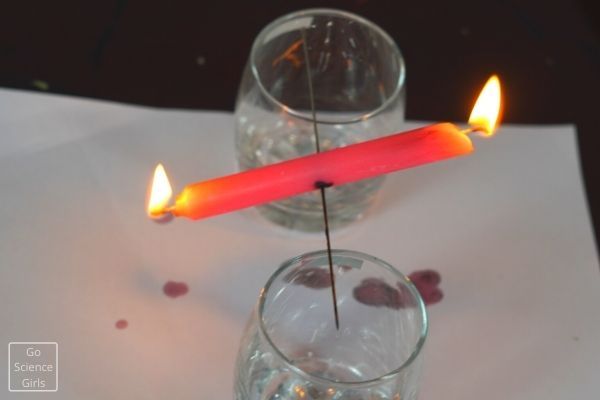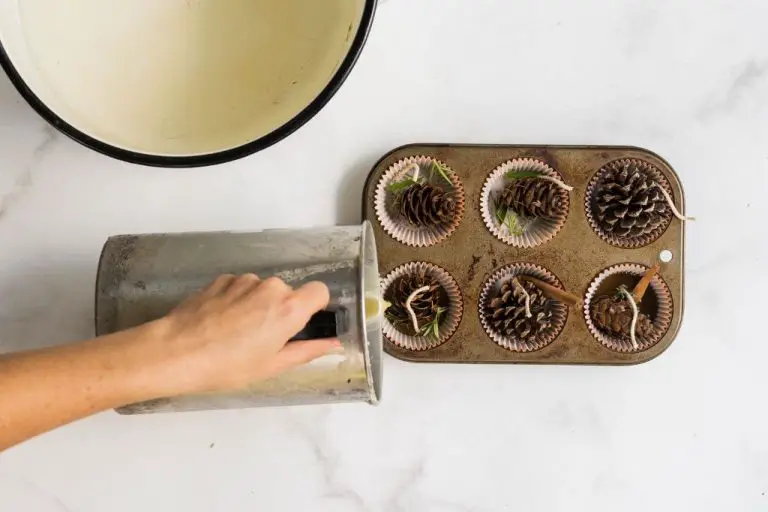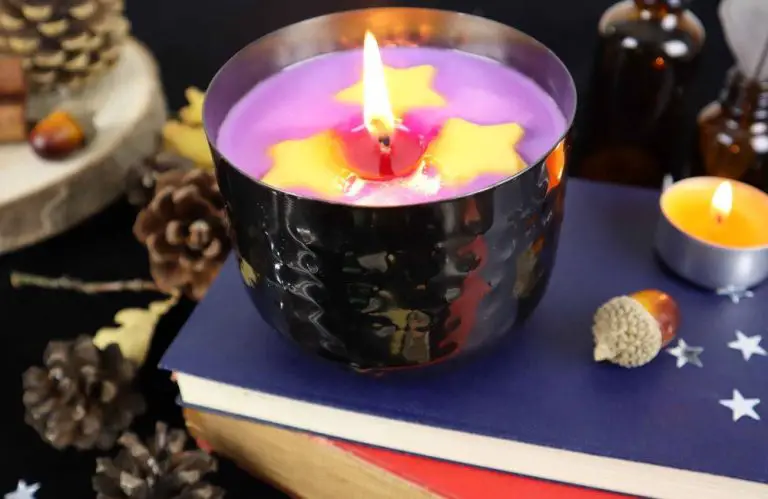What Does It Mean When A Candle Wick Looks Like A Flower?
Candle wicking is the process of placing a wick inside a candle to allow it to properly burn. A wick is a thread made from cotton, paper, or other materials that goes through the center of a candle. As the flame burns at the tip of the wick, it melts the wax around it which is then drawn up the wick through capillary action. This feeds the flame with more fuel to keep it burning.
Sometimes though, an effect called “flowering” can occur with candle wicks. This is when the tip of the wick curls and bends into a flower-like shape after burning for a period of time. It prevents the wick from burning properly and results in some unusual candle behavior like tunneling, mushrooming, or an irregular flame.
In this article, we’ll explore what causes the flower wick effect and troubleshoot solutions to prevent it.
What Causes the Flower Wick Effect?
The flower wick effect occurs when the wick of a candle becomes curled, bent, or distorted into unusual shapes resembling flowers or mushrooms. This is usually caused by the wax pool becoming too hot.
As a candle burns, the flame melts the wax around the wick, creating a liquid pool. The wick should extend straight up into the center of this pool to draw liquid wax up to the flame. However, if the wick is too long or the flame too high, excessive heat builds up in the wax pool. This high heat softens and weakens the wick fibers, causing them to bend, curl, and distort as they burn [1].
The technical term for this effect is “mushrooming.” The wick fibers mushroom outwards into odd shapes when exposed to prolonged high heat. Just like overcooking pasta or vegetables causes them to become limp and soft, excessive heat from the candle flame causes the wick to lose its sturdy, upright structure.
In addition to curling, flower wicks may become covered in black soot. This happens when the wick is drowned in melted wax, preventing oxygen from reaching the flame. The flame will start to smoke and produce more soot, coating the weakened wick [2].
Signs of Improper Wicking
Some common signs that a candle has improper wicking that can lead to the flower wick effect include:
Excessive soot or smoke: Sooting occurs when the wick is too large for the wax pool, resulting in incomplete combustion of the wax and wick. Sooting can make the flame appear dirty and the candle produce more smoke than usual. This extra soot may build up on the wick and contribute to the flower shape (https://wicksunlimited.com/common-burn-issues/).
Tunneling: This happens when the wick is too small for the wax pool, creating a tunnel down the center of the candle. The wick does not melt all of the wax, leaving the edges untouched while the center tunnels down. An improperly wicked candle is more prone to wick issues like flowering (https://www.terre-de-bougies.com/en/content/86-problems-candle-wick).
Drowning wicks: If the melted wax pool gets too deep, it can submerge parts of the wick before they have fully burned. This leaves partially burned sections that can curve and bend into a flower shape.
Choosing the Right Wick
Selecting the proper wick is one of the most important factors in preventing a flower wick effect. The wick acts as the fuel delivery system in a candle, so an improperly sized or constructed wick can lead to an imbalanced flame and the curled, mushroom-shaped tip associated with a flower wick.
Wicks come in different materials, thicknesses and shapes. Common materials include cotton, wood, and paper fibers. Thicker wicks typically work better for larger diameter candles, while thinner wicks should be used in smaller containers. Wicks with a flat, as opposed to round, shape can help control melting rate. Choosing the right wick size for the candle’s dimensions is crucial.
In addition to size, wick composition impacts wicking behavior. Some materials like wood and paper can increase chances of a flower wick because they don’t bend and curl into the melted wax pool as well as cotton. Cotton wicks are generally recommended to prevent mushrooming tips.
When the wick is too small for the candle diameter, it fails to deliver wax quickly enough to feed the flame resulting in the curled wick shape. A wick that is too large can cause issues like sooting. Consulting a wick selection chart and testing different wicks during candle development can prevent a flower wick.
Wick Trimming
Proper wick trimming is essential for getting the most out of your candle. The length of the wick determines the size of the candle’s flame. If the wick becomes too long, the flame will be larger than intended and cause issues like tunneling, soot, and an uneven burn. Most experts recommend trimming the wick before lighting the candle for the first time and then every few hours during use.
Candle wicks should be trimmed to approximately 1⁄4 inch before lighting. This initial trim helps establish an ideal flame height for that particular wax and wick type. While a candle is burning, wicks should be monitored and trimmed again once they become 1⁄2 inch or longer. Trimming periodically prevents excess carbon buildup on the wick which leads to emission of more soot into the air.
Trimming can be done with small scissors or clippers made specifically for wick trimming. Cut straight across the top of the wick, being careful not to trim too short. When in doubt, leave wicks slightly longer rather than too short. Wicks that are trimmed too low will produce small sputtering flames and prevent the wax from melting properly. Refer to the candle or wick manufacturer recommendations for ideal trim lengths.
Proper habits like wick trimming, combined with using the right size flame-controlled wick, will provide the best results. Trimming wicks before each use allows candles to burn cleanly and evenly down to the very bottom. This helps maximize the life of your candle.
Sources:
https://www.marthastewart.com/8053740/how-when-trim-candle-wick
https://www.harlemcandlecompany.com/blogs/journal/candle-care-101-how-to-trim-candle-wicks-the-right-way
Managing the Candle Flame
Properly managing the candle flame is crucial to prevent the wick from developing a flower shape. Here are some tips for managing the flame:
Trim the wick to 1⁄4 inch before lighting to help regulate the flame size. According to experts, trimming the wick prevents mushrooming and sooting issues (https://www.theouterbankscandlecompany.com/blog/candle-care-tips-keep-flames-burning-longer/).
Allow the wax pool to form completely across the top of the candle before extinguishing the flame. This helps prevent tunneling. Let the candle burn for at least 2-3 hours the first time to form an even wax pool (https://www.keapbk.com/blogs/keap/candle-burning-tips-to-make-you-a-candle-pro-fix-tunnelling-sweaty-candles-large-flame-smoky).
Avoid drafts from fans, open windows, or air conditioners which can cause the flame to flicker and smoke. This uneven burning promotes wick issues (https://candles.org/your-foolproof-guide-to-burning-a-candle-correctly/).
Burn the candle for 2-4 hours each time to maintain the wax pool and prevent tunneling. Extinguish before the wax pool edges reach the side of the container.
Position the candle away from flammable objects and out of high traffic areas. This prevents the wick from bending over and becoming distorted.
Wick Positioning
Proper wick positioning is critical to prevent flower wicks. Centered wicks tend to produce the most even burn and wax pool. Off-center wicks can cause the flame to burn hotter on one side, creating an uneven wax pool. This unevenness promotes mushrooming or flowering of the wick as the flame reaches for wax on the cooler side of the candle. According to Candle Making 101: Multi-wick Candles, wicks should be placed at least 1.5 inches apart for even burning.
To center wicks, use a wick stick tab or ruler to measure the diameter and find the midpoint of the candle vessel. Mark the center point and use it to evenly space multiple wicks. Off-center wicks may provide creative visual effects, but make mushrooming more likely. Centered wicks reduce the chances of a flower wick forming.

Troubleshooting the Flower Wick
If you notice your candle’s wick starting to curl into a flower shape, there are a few troubleshooting steps you can take to fix it.
First, trim the wick. Use sharp scissors or nail clippers to snip off the curled section of the wick so you have a fresh, straight wick to work with. Trim the wick to 1⁄4 inch length before lighting to reduce excess smoking and promote full melt pool creation (source).
Next, melt the wax around the wick to free it from any wax that may be holding it down. Hold a heat source like a blow dryer on its highest setting 1-2 inches above the tip of the wick for 30-60 seconds until wax melts (source). This will allow the wick to stand up straight when you next light it.
Position the wick back to center as the wax resets. Use a wick stick or skewer to gently poke the wick and make it stand upright. Center it in the melted wax pool as the candle resets.
Finally, let the candle cure and harden fully before lighting it again, at least 24 hours. This allows the wax to completely solidify and provides the best burn setup.
With a trimmed, repositioned wick in melted and reset wax, you can light the candle again and monitor for any recurring curling. If problems persist, it may require further troubleshooting, a larger wick, or discarding the candle.
When to Discard a Candle
There comes a point when a candle is unsalvageable and needs to be discarded. According to Archipelago, you should discard your candle when only a half inch of wax remains. Burning it longer than that can overheat the bottom of the candle and create a safety hazard.
Some other signs that indicate it’s time to throw out a candle include:
- The wick becomes very short and difficult to keep lit
- The candle begins to emit black smoke or soot
- An unusual or unpleasant smell develops
- The wax pool becomes very shallow or uneven
- The glass container is damaged from overheating
If the wick exhibits mushrooming no matter how often you trim it, or if the wax completely stops pooling evenly, the candle may be beyond recovery. According to a Bath & Body Works customer on Reddit, when a candle won’t light anymore it’s time to discard it. Trying to revive an overly stubborn candle is not worth the potential fire hazard.
Conclusion
The flower wick effect occurs when the wax pool reaches the wick tabs, causing the wick to bend and fan out like a flower. This prevents the wick from burning properly. To prevent the flower wick effect, use the right wick size for your candle, trim wicks to 1⁄4 inch before lighting, keep wicks centered in the wax pool, and discard candles once significant mushrooming occurs. With proper wicking and maintenance, you can avoid the hassles of a flower wick and enjoy a clean, even burn.





